Review: PROGRAM 5 at San Francisco Ballet Showcases Its Dazzling Dancers
The enthralling new program featuring a world premiere by Helgi Tomasson runs through April 16th
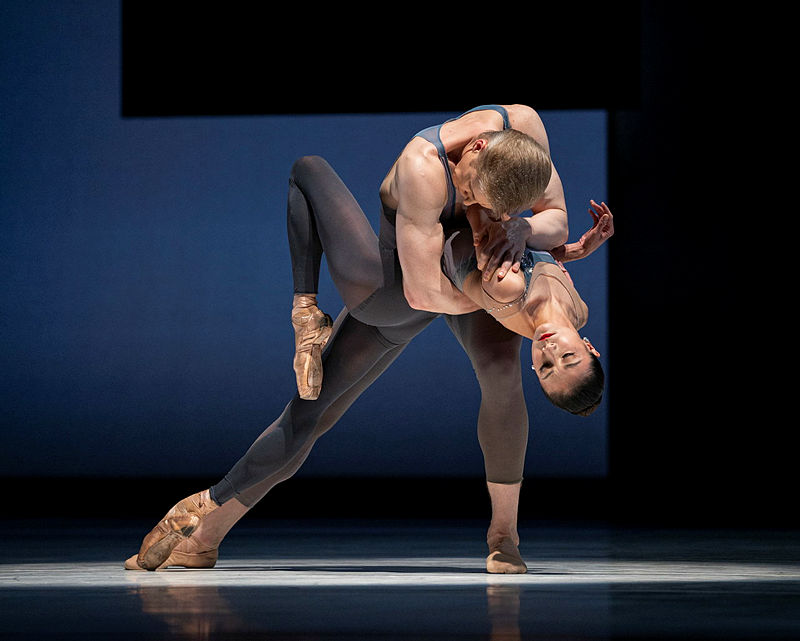
"The soul of the company is always the dancers. If there ain't no dancers, there ain't no show." So states famed choreographer Mark Morris in a brief video that opens San Francisco Ballet's new evening of mixed repertoire. Morris is being his usual blunt, cheeky self, but presumably what he means is that if you don't have fabulous dancers, there's no point in putting on a show. When Morris makes this remark, it's intended as a compliment to Artistic Director Helgi Tomasson for his uncanny ability to discover and develop major talent. Well, based on the evidence of what we see in Program 5, let me say that Morris' words are spot on. The evening abounds with spectacular dancing from start to finish.
The program begins smashingly with Tomasson's The Fifth Season from 2006, set to Karl Jenkins' gorgeous and skittery minimalist score. Tomasson has rarely chosen to make dances to contemporary music, but the result here is so transcendent that it begs the question of why he hasn't worked more often with living composers. His movement is so in tune with every shift in the complex score that you would think the music had been written expressly for this ballet. The piece begins with two dancers in half-light moving to a nervous ostinato from a solo violin. When the full string section suddenly enters in a burst of lush harmonics, the stage lights come up full on four additional couples dancing in counterpoint to the jagged rhythms. This is followed by an unusual waltz for two couples dancing sometimes in unison and sometimes in opposition, a romantic duet for the opening couple, a bracingly modern and spiky tango for one woman and three men, a breathtakingly intimate adagio for a different couple, and a spritely and angular finale for all 14 dancers.
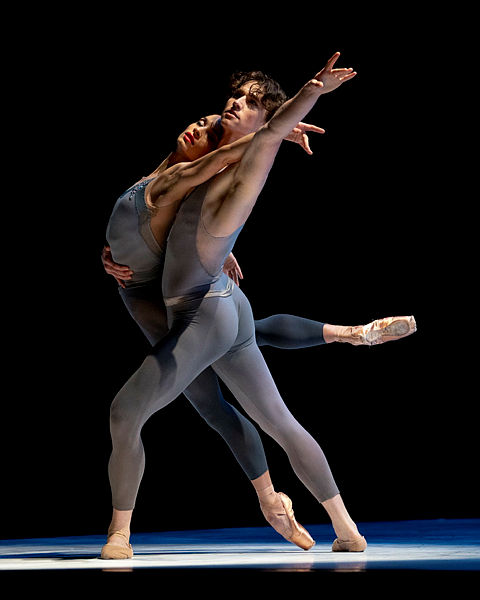
Helgi Tomasson's The Fifth Season
The opening night cast danced brilliantly throughout. Dores André and Benjamin Freemantle kick things off with such barely controlled energy that it seems the ballet might have peaked too soon. Not to worry. The ever-beguiling Sarah Van Patten raises the stakes even higher in the tango section with her intense focus and attack. Even as her body is manipulated by the three men, it is clear that she is always in control of the situation. The ballet reaches its true climax in an intimate and tender pas de deux danced so beautifully by Tiit Helimets and Yuan Yuan Tan that it feels like they are spontaneously reacting to the music in real time. The finale gives all the dancers the chance to let loose, concluding in a startling image of the women cantilevered upside down from the men's waists. It is also worth noting that that both Van Patten and Tan were in the original cast of The Fifth Season. They were already giving great performances 16 years ago, but if anything they are dancing it even better now.
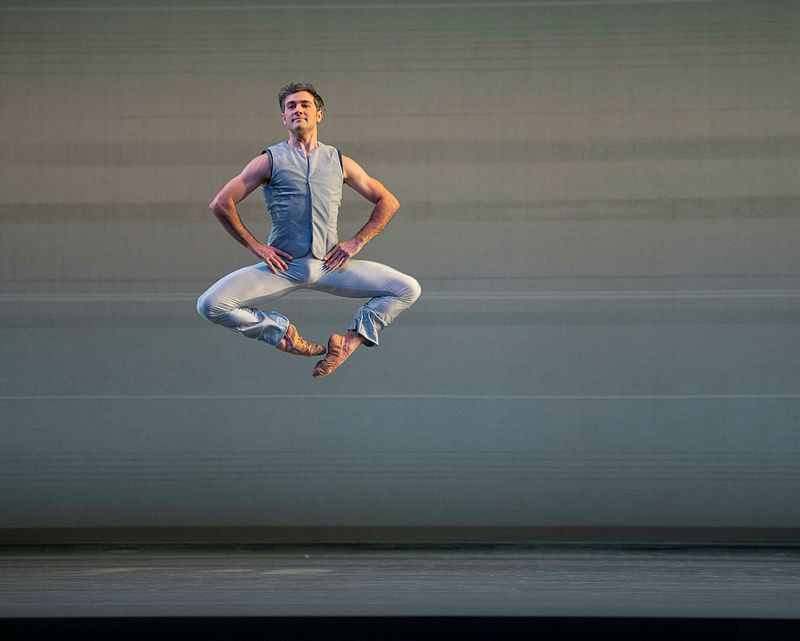
Next up is Harmony, a final world premiere by Tomasson before he retires next month. For this new dance, he goes way back to the early 18th century with Jean-Phillipe Rameau's score of spirited solo piano pieces. Tomasson made this ballet to celebrate of the company's return to live performance and devised it as a showpiece for his remarkable dancers, giving everyone in the cast of 12 their own moment in the spotlight. The piece opens with a sort of homage to Dances at a Gathering, with a group of dancers silhouetted against a hazy backdrop. Slowly they start to move, one of them raises an arm up to the sky, and suddenly we're off to the races.
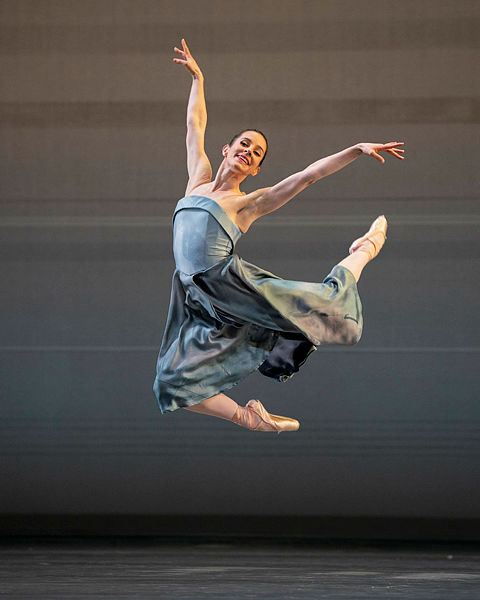
There are a variety of duets and group dances, but the highlights of the choreography are the many brief solos that are tailor-made by Tomasson to feature the unique talents of each dancer. We get a joyous Diego Cruz repeatedly taking to the air, a playful Julia Rowe bringing endless nuance to her quickfire changes in speed, and a wonderfully confident Leili Rackow tearing into some very tricky balances. A solo for Max Cauthorn features astoundingly fleet footwork with legs akimbo, and Misa Kuranaga enchants in a sequence of filigreed turns. The ballet is perhaps a movement or two too long, and I wasn't quite sure what to make of the muted backdrop which suggests an odd mashup of old timey TV screen static and southwestern sand art, but those are minor quibbles. If Tomasson's overriding goal is to celebrate the individual talents of his dancers and their joy in performing, then I'd say mission accomplished - and then some.
Program 5 concludes with Yuri Possokhov's Magrittomania from 2000. This was his first piece made on SFB and instantly marked him as a dancemaker with a vivid visual imagination. He has grown significantly as a choreographer in the ensuing two decades, but Magrittomania still has plenty to offer. Taking the surrealist imagery of René Magritte as his point of departure, he concocted a ballet that is by turns humorous, searching, anxious and melancholy. Yuri Krasavin's score of reimagined Beethoven tunes integrated with his own original compositions combines the familiar with the unsettling in a way that neatly underscore the ballet's themes.
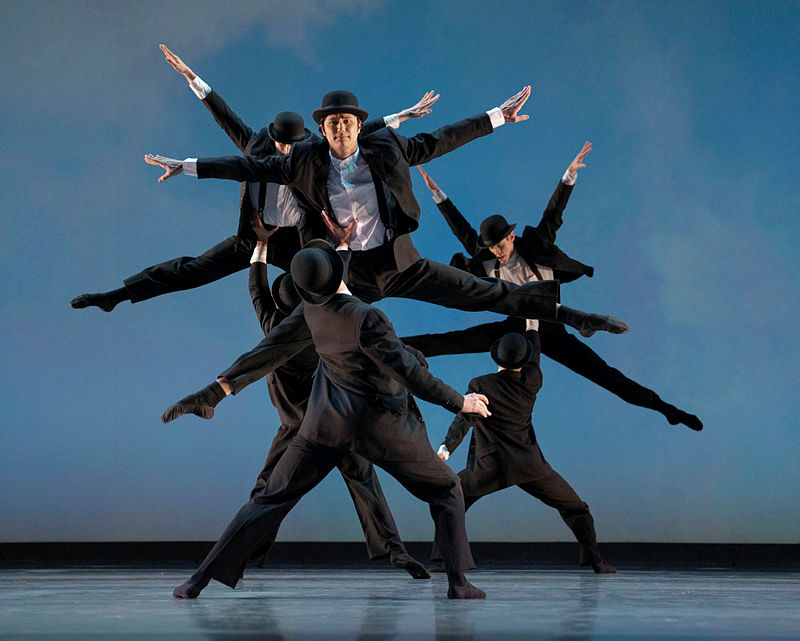
This is a dance that is as much about the overall stage picture as the choreography. Striking imagery composed of Magritte's familiar subject matter dominates the proceedings - oversized green apples, bowler hats, enshrouded lovers, doves and streetlamps in compositions that play with our perceptions of positive and negative space. The ballet follows a sort of an everyman, dressed in black and white with bowler hat, who seems caught in a dreamworld where he constantly searches for something - love, companionship, fulfillment, meaning? - that seems perpetually just out of reach.
The choreographic highlight is a trio of identically-dressed men who dance to Jewish folk tunes, and are later joined by the main character for an inventive male pas de quatre that is tender, quirky and yearning. There is a repeated movement where a pirouette ends with head tilted to the side and arms pointed diagonally downward that somehow perfectly expresses the elusive nature of our quest for contentment.
Once again, we could not hope for a better cast. The aforementioned trio of Max Cauthorn, Esteban Hernandez and Wei Wang manage to be beautifully in synch and still nicely individualized as they execute their folkish, Fiddler-esque choreography. Jennifer Stahl makes a strikingly statuesque romantic interest, finding just the right balance between alluring and inscrutable that the role calls for. As the central character who takes us on the journey, Luke Ingham gives the best performance I've seen from him in his 10 years with SFB. He has always been a very capable dancer and an especially strong partner, but I've never before seen him delineate a character so completely. This role seems to tap into something deep within him, as he perfectly embodies some ineffable sense of being lost while constantly searching that ultimately gives the ballet its emotional impact. It's a definite highlight in a program full of stunning performances by fabulous dancers. I'm guessing that even the notoriously hard-to-please Mark Morris would agree.
[All photos by Erik Tomasson]
Live performances of San Francisco Ballet's Program 5 continue through Saturday, April 16th at the War Memorial Opera House, 301 Van Ness Avenue, San Francisco, CA. Running time is approximately 2:15, including two intermissions. Proof of full COVID vaccination and the wearing of masks while in the building are required. For tickets and additional information, visit www.sfballet.org or call (415) 865-2000, M-F 10am-4pm.
Reader Reviews
Videos

